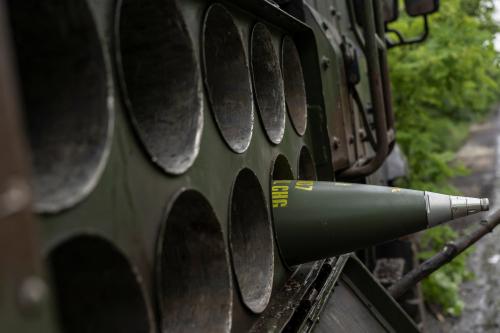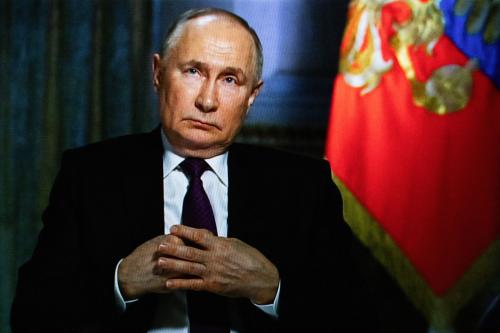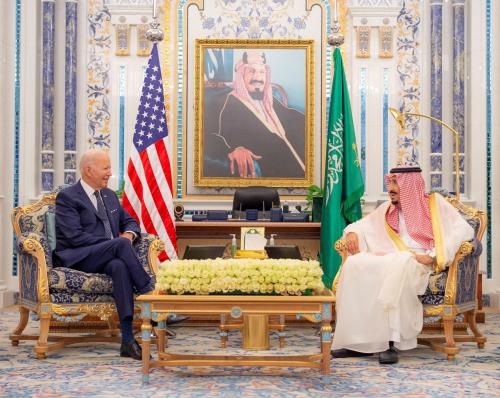North Korea’s apparent nuclear test yesterday is a serious and threatening development for several reasons.
First, North Korea has now confirmed to would-be nuclear consumers around the world that its technology works, increasing the risk that it will sell those materials or even weapons it already possesses.
Second, U.S.-South Korean deterrence could be weakened if North Korea thinks it has a nuclear trump card and tries to play it in some way, engaging in even more blatant brinkmanship than it has in the past.
Third, if war in Korea ever occurred again, we now have more reason to worry that the North’s nuclear weapons could be successfully employed against South Korean or American military forces – or even Seoul, or Tokyo.
Finally, North Korean nuclear weapons could start a nuclear domino effect in Northeast Asia, possibly provoking Japan, South Korea and Taiwan, which would in turn weaken global nonproliferation more broadly.
One might be tempted to argue that with North Korea possibly now in possession of a proven nuclear arsenal, probably consisting of about 10 remaining weapons, the issue will recede. This argument is too optimistic and too fatalistic.
It is fatalistic because it gives up too soon. Even though it has become harder to do so, we must still try to walk North Korea’s arsenal back. The world ultimately persuaded South Africa, Ukraine, Belarus and Kazakhstan to denuclearize. Accepting North Korea as a nuclear power is to be too blithe about the associated dangers. North Korea has considered resuming construction on two large reactors with the theoretical capacity to produce enough plutonium for dozens of bombs a year.
So a major new U.S. policy effort is needed. Coming up with one will be very difficult, because fewer tools are now available to U.S. policymakers. The threat of military force is no longer useful to eliminate North Korea’s nuclear capacities; its plutonium has now been reprocessed and moved. Even before this test, the world had largely accepted a de facto North Korean nuclear arsenal.
The core of a new policy should be to force North Korea to choose between either more economic and diplomatic engagement or less. The goal should be to make the status quo untenable for Pyongyang, forcing it to choose between a better relationship with the outside world – including more trade, investment, and assistance – and the prospects of pressure and coercion being applied against it. It should be intolerable for South Korea and China to give more aid to a North Korea intent on keeping or expanding its nuclear arsenal.
The United States and its regional partners, South Korea, Japan, China and Russia, should offer Pyongyang inducements as well as a clear threat that the nuclear status quo, or worse, cannot and will not be accepted. In doing so, they should be careful not to set a precedent for rewarding illicit behavior by granting North Korea large benefits simply for undoing a nuclear program it should not have had in the first place. They should make more comprehensive demands: not only denuclearization but also reductions in conventional forces, elimination of chemical arms, structural economic reform, and the beginnings of human rights improvements as a condition for substantial increases in aid.
If Pyongyang is prepared to make such a deal – or even most of such a deal – Washington and other capitals should be clear that they are prepared to help finance a transition to a Vietnam-style economy in North Korea. Total aid packages in the range of $2 billion to $3 billion a year for several years, to help build infrastructure, revitalize agriculture and improve the public health and education systems, could be acceptable if North Korea were to move verifiably and decisively in this direction.
U.S. bans on trade and investment could also be lifted (provisionally at first and later in a permanent way); a temporary U.S. diplomatic presence could lead to full relations and a permanent embassy within several years if all went well.
This is admittedly an ambitious vision. It probably would not appeal initially to Kim Jong Il, who might worry that once reform processes were unleashed, he would suffer the fate of Nicolae Ceausescu in Romania rather than that of the reformist leaders of modern-day Vietnam or China. But those two countries have shown the way. And they have done so while retaining a communist superstructure, which could make the idea potentially palatable to Mr. Kim and allow him to remain in power as he transformed his nation. Moreover, by making the status quo untenable, Mr. Kim could be forced to choose between reform and slow strangulation of his state.
Of course, even if the basic deal had some appeal to Pyongyang, it might not be feasible to persuade North Korea to give up all of its nuclear capabilities immediately. It might take several years to reach that goal. But as long as any deal immediately and verifiably froze its nuclear activities, and then quickly began to get plutonium out of North Korea, the United States could accept it.
Should negotiations fail, the option of coercive action should be retained. On the economic front, the goal should be to convince South Korea and China that their current level of economic engagement would be inappropriate if Pyongyang refused a reasonable deal.
Military options would not be totally off the table, especially if North Korea either threatened to sell nuclear materials abroad or continued construction on its large reactors. One possibility, though hardly a panacea, would be a “surgical” military strike against the larger reactors. Even though it is too late to prevent North Korea from having the plutonium for perhaps 10 bombs, it is not too late to prevent North Korea from becoming an industrial-scale producer of weapons.
But the riskiness of even such a limited use of force should focus all of our minds – in South Korea, China, Japan, the United States and elsewhere – on the overdue need to construct a united front and sternly pose Pyongyang a stark choice at this precarious moment in Northeast Asia.



Commentary
Op-edNorth Korea: World Must Present United Front
October 10, 2006